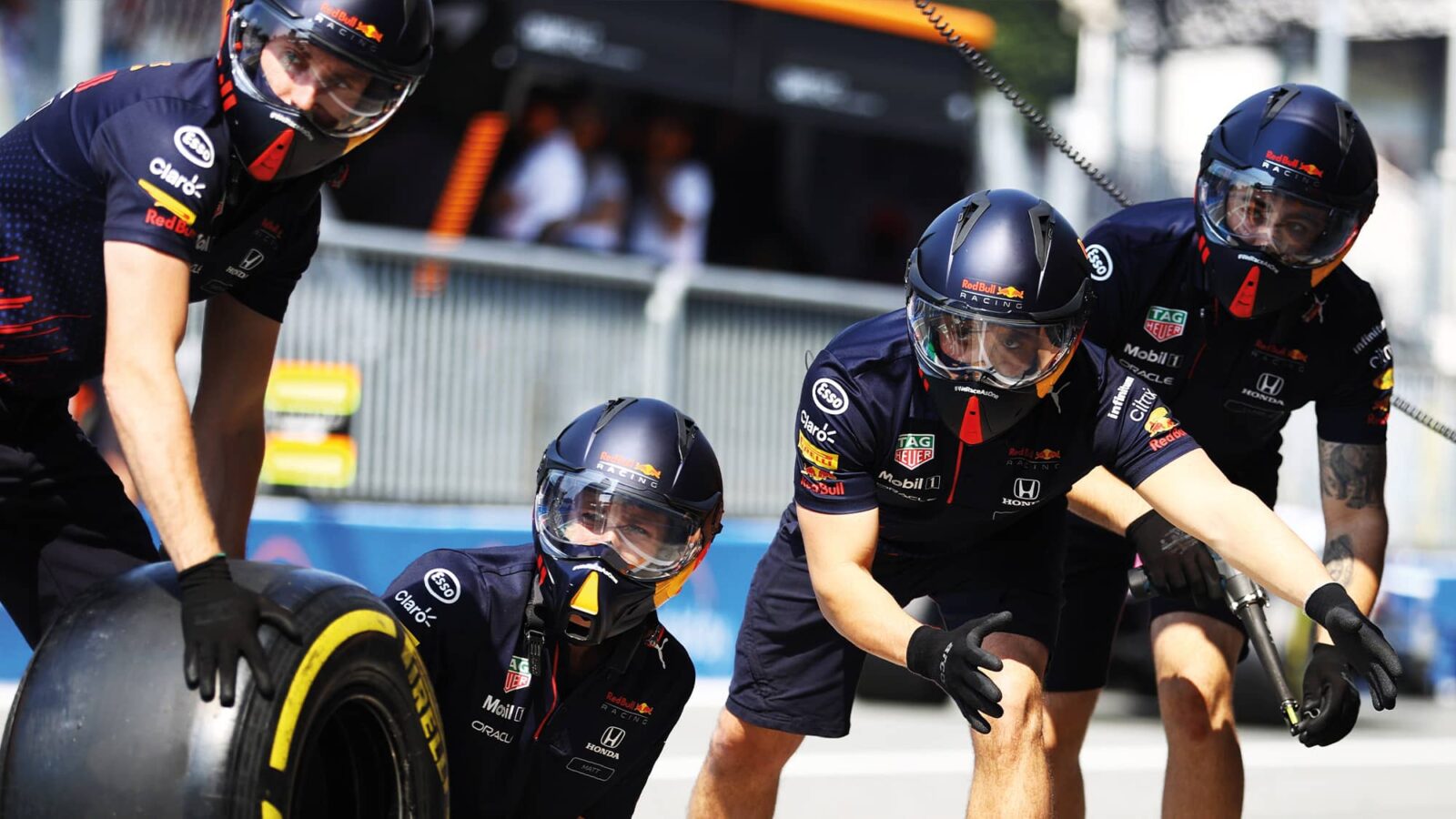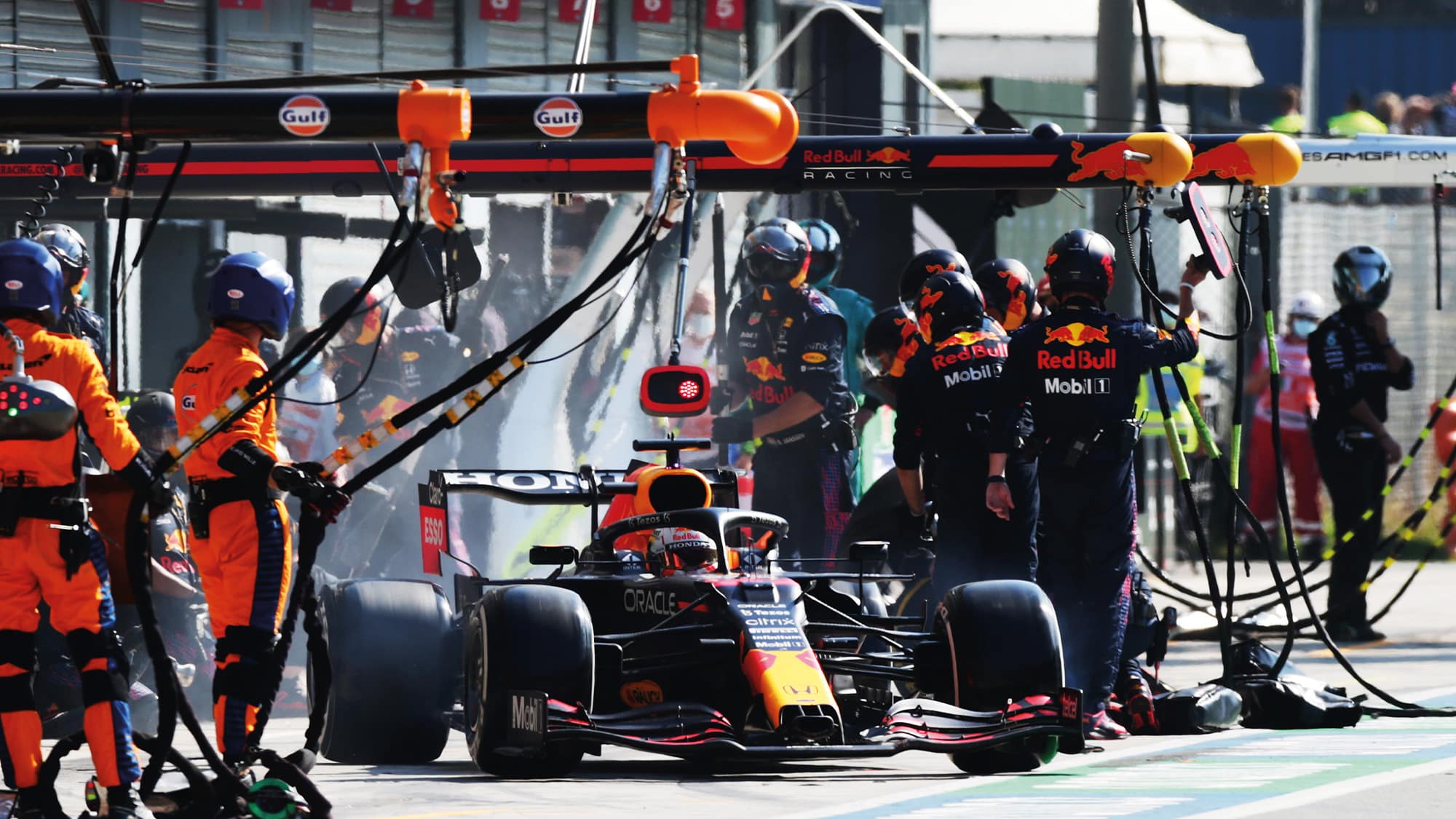The robots won’t win in F1's pitstop wars
Automated wheel guns may have been the future for Formula 1 pitstops, but the switch back to manual pitstop systems can misfire

A pitstop disaster for Red Bull at Monza cost Verstappen a win, and set up his clash with Hamilton
Bryn Lennon/Getty Images
Ferrari was the first to introduce ‘intelligent wheelguns’ around three years ago and many of the other top teams quickly followed. These ‘smart’ guns had software that runs a series of automated checks which, once completed, send an automated signal to the front jack man to release the car. Once the system has detected that all four wheels had been tightened, that signal would go automatically, and in doing so saving the human reaction time of the gun man. To arm the system, the gun man would press a button on the gun, which he would do in one movement, even as he was still tightening the wheel nut.
The FIA felt that the super-fast pitstops were becoming too automated and earlier this year decreed that from Spa onward the button must be pressed manually after the nut had been tightened, thereby reintroducing a human element into that part of the operation.
If the button was pressed in the old way, before the nut had been fully tightened, the signal simply wouldn’t go through as it should. It would be rather like the driver pressing his DRS button before the activation zone. They could do it all they liked, but ultimately nothing would happen from it.
This is what occurred on the right-front wheel of Max Verstappen’s Red Bull during his Monza pitstop. By the time it was realised what had happened and the procedure was repeated to clear the system, 8sec had been lost. And with it went his chance of a win.

